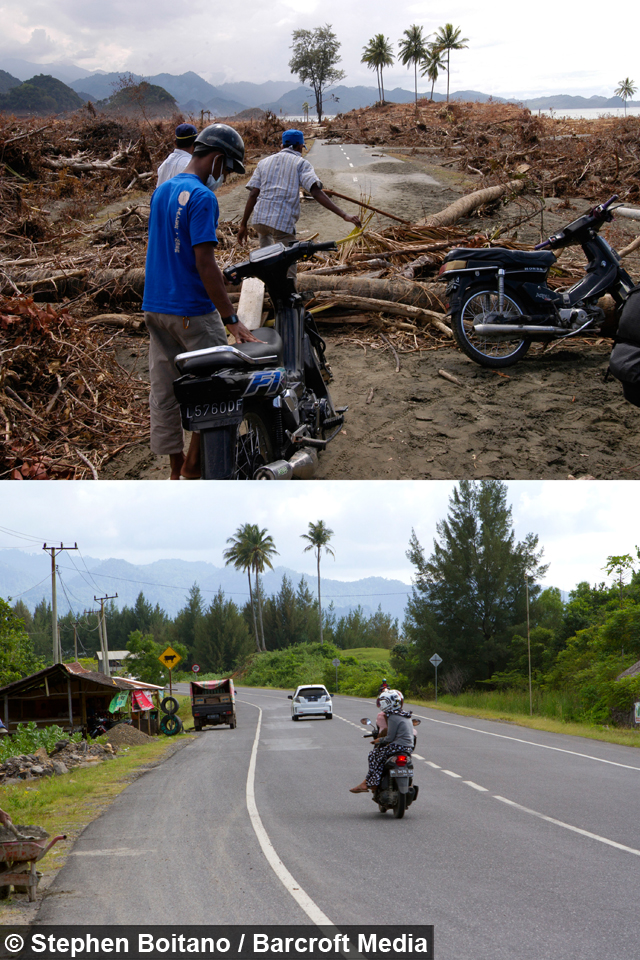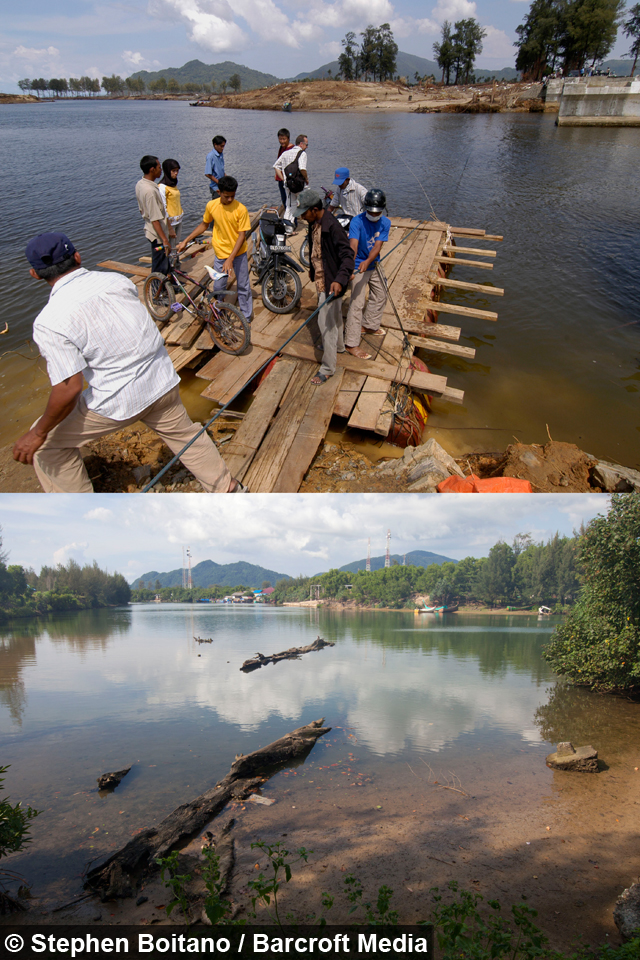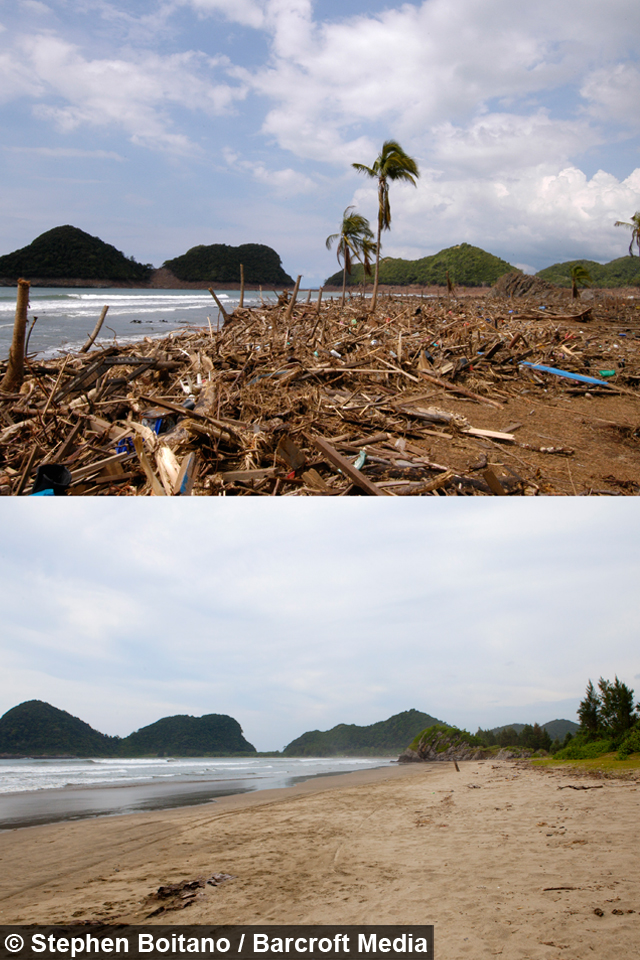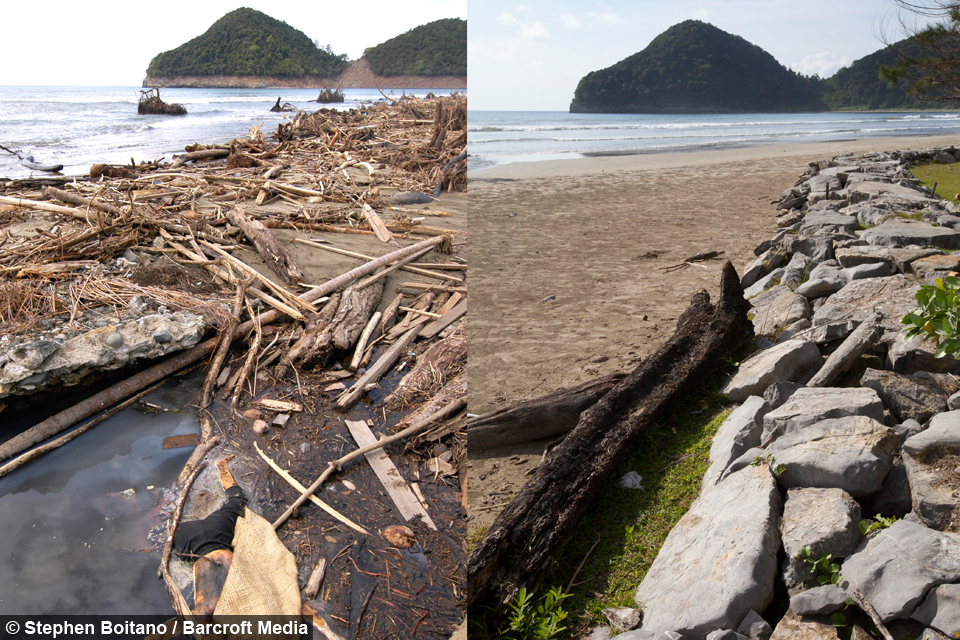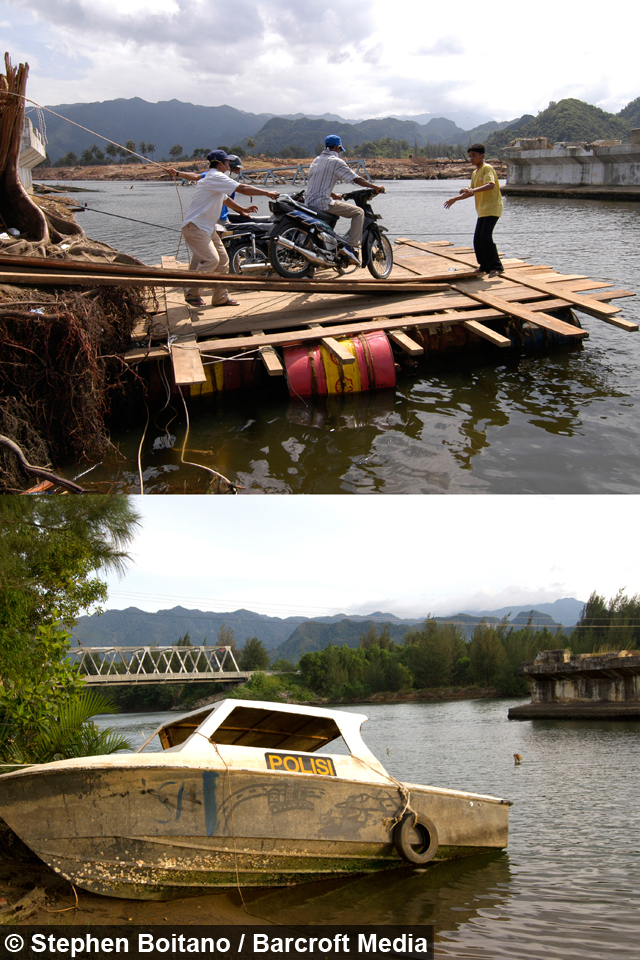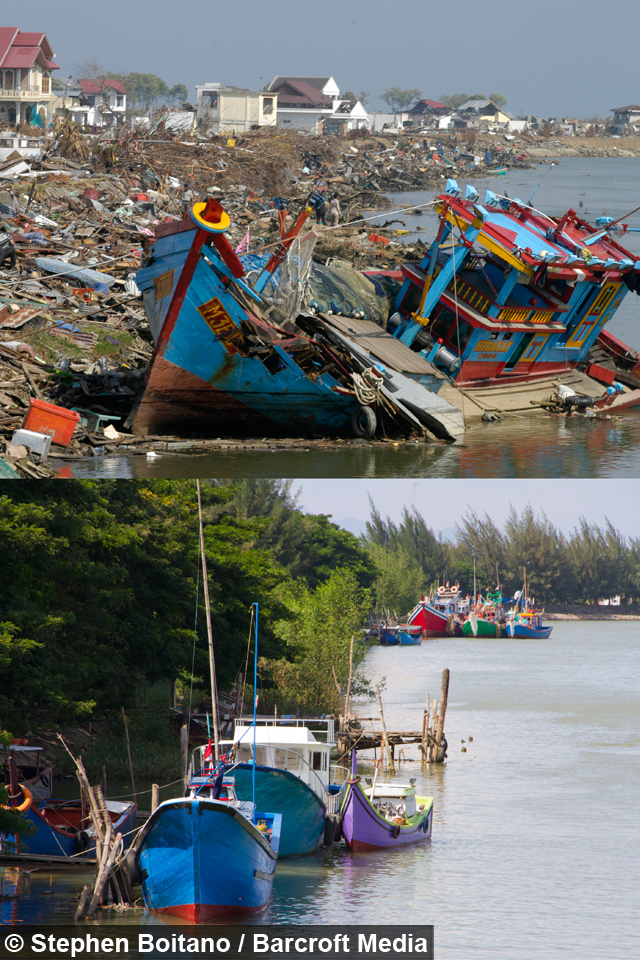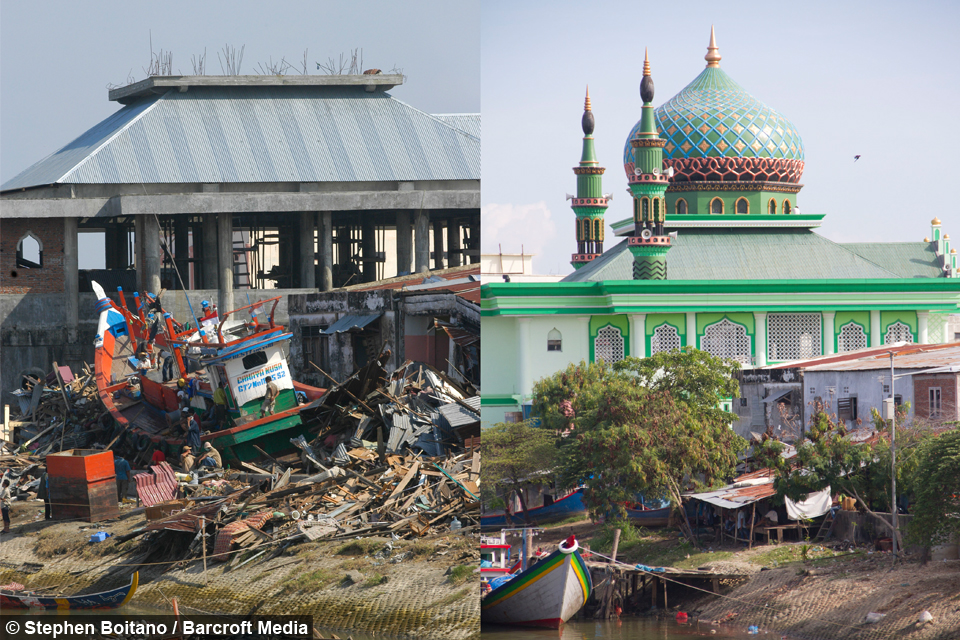Then and now: Banda Aceh Rises from destruction 10 years after Tsunami
By Amanda Stringfellow @amanda_l_s
Scroll down for the full story
Aceh in Indonesia was the closest major city to the epicentre of the 9.1 magnitude earthquake - suffering a huge hit from the following tsunami which resulted in around 130,000 deaths in the area.
Throughout the affected region of eleven countries, nearly 230,000 people were killed, making it one of the deadliest natural disasters in recorded history.
Photojournalist Stephen Boitano, who was in Indonesia when the tsunami hit in 2004, has revisited the sites which were devastated by the natural disaster a decade ago.
In one set of images a member of the Indonesian Army standing guard in the wreckage of the Al-Tawhid mosque forms a sharp contrast with a motorbike riding past a now rebuilt urban setting.
A scene of devastation on the Sungai Krueng Aceh river after the tsunami has been replaced by a rebuilt mosque and tranquil scenery.
Stephen, from the USA and based in Bangkok, Thailand, was on the top of a volcano when the tsunami struck and escaped unharmed from the disaster.
But when he returned to the coastal region of the country, he came face-to-face with wrecked buildings and human fatalities.
Stephen said: “Aceh in 2004 was a scene of horrible and almost total devastation.
“The smell of dead bodies was everywhere and the people that survived seemed to be in shock and utterly depressed about losing so many family members. Many areas hardest hit were eerily quiet and abandoned.
“Today Banda Aceh is completely rebuilt and the people are super friendly.
“It’s off the beaten tourist trails, that’s why the people are so friendly there – it’s a bustling city that is back to normal.
“Some of the hardest hit places where people were wiped out have not been resettled and are now just untouched beautiful beaches and pine trees.”


